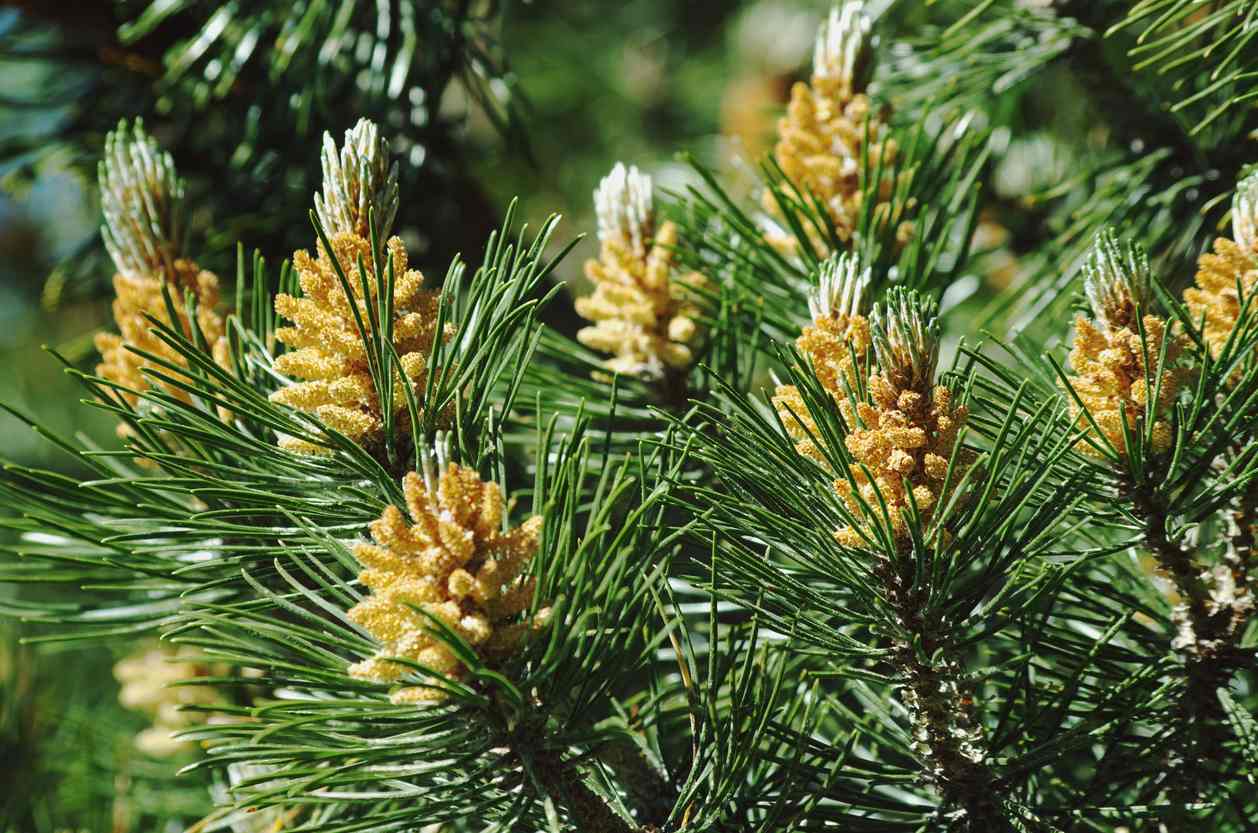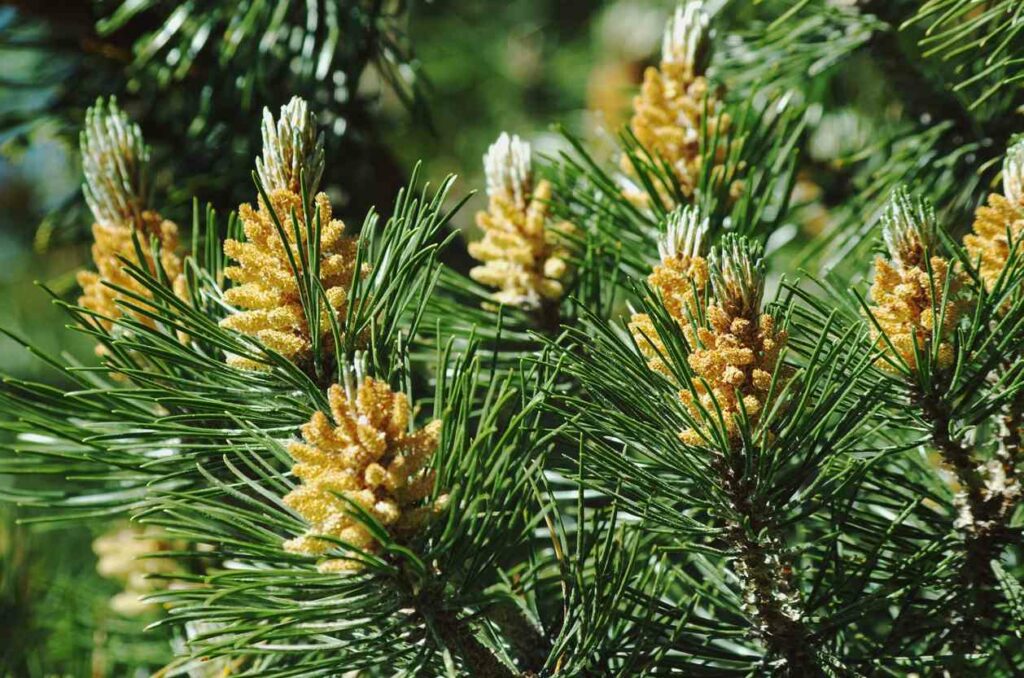White Pine Tree – How To Plant And Care For The White Pine Tree
The white pine tree is a graceful and elegant tree that cuts a fine figure in your garden. It has evergreen needle-like leaves that give it a tender look despite its dense foliage and excessive height. As an ornamental tree, you can either use it for landscaping or as a background tree to tie the garden together. When planted in the right place, this tall tree brings about a sense of harmony and unity to a sprawling garden or lawn.
Even though trees are hardy and will take care of themselves once they establish, the same cannot be said about the white pine tree. It needs optimal conditions to grow and thrive. This would demand extra care and a lot more of your time than you might think. So how can you grow the white pine tree in your garden and get the most out of this ornamental pine without putting yourself out? This article walks you through the process of planting and caring for the white pine tree.
White Pine Trees at a Glance
The white pine (Pinus strobus) or Eastern white pine as it is sometimes called, is an evergreen that reaches up to 80 feet high and 40 feet across. That’s a giant of a tree that needs plenty of space in your garden or yard. It is also a fast-growing tree that adds about 3 feet to its height every year. This excessive growth requires more pruning than is usual for a garden tree.
As for the needles, they usually drop between September and October giving you a lot of cleaning up to do. However, you can use these needles as mulch for other flowering plants and veggies in your garden. They also burn well in the cold winter months which saves on wood stockpiling in the winter. Just make sure to keep sparks or fire away from the base of the tree at the shedding time since the needles are flammable.
Native to Canada and the northern parts of the USA, the trees are good windbreaks thanks to their dense foliage and fast growth rate. However, they tend to lose their lower limbs quickly especially if you get strong wind in your area. The branches are not sturdy enough to withstand the weight of snow piling up in the winter. So if you have heavy snowfall in the winter, the white pine might not be the ideal tree for your garden.
Landscaping with the White Pine Tree
It’s safe to say that the white pine tree is full of contradictions. It’s graceful and messy at the same time. It serves as a windbreak but snow damages its branches and an icy storm can break it in half. It has a strong and robust root system but its limbs are fragile. In short, it’s the kind of tree that poses a challenge when you use it for its ornamental values.
We all want a visually appealing tree that needs as little care and effort maintaining it as possible. Unfortunately, the white pine is not one of those trees. It has a stunning look with its tapering foliage and the needles give the garden a bucolic ambiance. But in return, you have to attend to the tree hand and foot to keep it in good shape. Storms, snow, and even an energetic gust of wind could wreak havoc with the meticulous tree you have been caring for.
Other uses of the tree include using the branches in decorations and crafts. You can also plant them in rows as windbreaks or trim them into hedges. The cones are great as ornaments especially when wired together.
How to Grow the White Pine Tree
You might be surprised to learn that you can grow this magnificent tree from seeds. You read that right. But if you don’t have the patience for seeds, you can plant a seedling or a potted plant you get from the nursery. Since planting seeds is the most fun and requires the most work, we’ll cover it here. The other two methods are almost identical to planting white pines from seeds. Here’s how to go about it in easy steps.
- Give the seeds the water test to make sure they are good. Get rid of the seeds that float in the bowl of water since they won’t germinate.
- Soak the seeds in clear water for 24 hours before planting them. This gives them a better chance at germination.
- The best time to plant is in the spring when the soil starts to warm up.
- Choose an area that will be the permanent place for this giant tree. Ensure you have enough room to accommodate a tree that grows to 80 feet tall and half as much in width.
- Break the surface of the soil and loosen it with a hoe. Remove any weeds or brush from the ground since it will interfere with the seedling’s growth.
- Dig a small hole about a quarter-inch deep and drop the seed in it then cover it with soil.
- Experts recommend that you plant more than one seed in a row. After they germinate you can keep the healthiest seedling and get rid of the others.
- The seeds need a lot of water. So water immediately after planting and keep watering every day until the seeds germinate.
- Use a sprinkler to water the seeds. They’re gentler on the soil and won’t blow away the seeds.
White Pine Tree Care
That was easy enough. Apart from keeping the soil wet until the seeds germinate, you have nothing to worry about. Except for voles of course. They love these seeds and feed on them. So you’ll need to protect your pine seeds until they germinate. And once you have the seedling growing sprightly in your garden, it’s time to get to work.
Light
As much as trees go, the white pine needs moderate light. It can get by with just 4 hours of sunlight every day. But the more sun it gets the better. Even if you don’t get a lot of sun, you can pick your spot carefully to give the tree enough light. For example, you should plant the tree in a spot facing the south or west as opposed to northern or eastern-facing areas. The afternoon sun is usually warmer and brighter than in the morning hours. The sun not only gives you dense and lush foliage but improves the strength of the trunk and limbs against gusts of wind and storms.
Soil
You’ll need to prepare the soil before planting your white pine. This allows you to test the pH levels and adjust the acidity of the soil to suit the tree. This pine thrives in slightly acidic soil as long as it’s well-drained. Clay or heavy soil will give the root system a hard time spreading and growing. So mix your soil with a good portion of sand or perlite. You can also use mulch to protect the roots and keep them moist. A thick layer of mulch will also bring the pH levels to the ideal 5.5 to 6.5. These are the acidic levels it prefers.
Water
The water needs of the white pine tree vary as it grows. In the early stages from the seed onwards, it needs a lot of water. You can practically water it every day to keep the soil wet enough for the seed to germinate. The same applies to the young sapling. It needs plenty of water to satisfy its high growth rate. The roots at this stage are still too young to find moisture in the deep recesses of the soil. Once the roots establish, you won’t have to water the soil that frequently. You can get away with dry soil every now and then especially when the tree is dormant.
Fertilizer
As a heavy feeder, your white pine needs plenty of plant food supplements just about every year. When preparing the soil to plant the seeds, make sure to mix in a generous portion of organic materials such as mushroom compost. It is easy on the roots and keeps feeding the sapling for weeks on end. As the tree grows, you’ll need to use an acidic fertilizer designed for evergreens. Apply the fertilizer in the early spring when the tree is still dormant. You don’t need to fertilize the tree again throughout the year.
Pruning
With the white pine, pruning is part and parcel of the tree’s care. Just think of all the needles, broken, limbs, and branches. Not only do they tarnish the perfect picture you’re painting with the tree, but they also pose a fire hazard. Especially with the needles near the base of the tree. So remove any damaged branches and clear the needles regularly. The best time to prune the tree is in the fall or winter. That’s when the pine is dormant and safe to hack away at the branches. You might also cut back the dense foliage if you anticipate a storm that could damage it.
Pests and Diseases
Once the seeds pass through the vole test and survive, you’ll need to protect your white pine against a variety of diseases. One disease, in particular, the white pine blister rust is lethal and few pines would survive it. Unfortunately, there’s no cure for it. You can only cut down the infected tree to prevent the spread of the disease.
Another pest, the white pine weevils have a special affinity for this pine. They feed on the leaves and damage the young offshoots. The best way to deal with them is to spray the tree with a powerful pesticide. With mature trees, that can be a challenge due to their excessive height.

